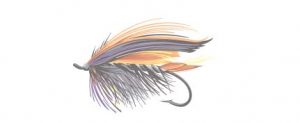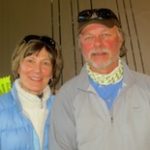Parshall, Co. Williams Fork River. January 23, 2013.
Midges are the greatest food source for trout in the winter. As you can see from the photo, they are miniscule, especially in their pupal and larval stages. The fly that you tie on your line to imitate a midge is so tiny that it is like threading a size 12 sewing needle. Even so, they catch fish – as long as you land them in their feeding lanes so they don’t have to move to eat them.
So where are their feeding lanes? Well, that’s part of the “science” of fly-fishing – learning how to identify those spots on a river where a fish would hang out. Today, on the Williams Fork, we mostly fished along the “seam of a riffle.” A riffle is an area where the current is flowing faster – like a mini rapids – oftentimes in the center of a river. The seam is the area that borders the riffle and the calmer water. The fish situate themselves such that they don’t have to work against the current but can also take advantage of the food floating downstream. So taking all these factors into consideration plus a few more like line weight, casting, good drifts, etc. you can catch fish as evidenced in this photo.
The temperature was -11 when we started out and rose to 7 degrees. The water was a balmy 34 degrees, so we placed our water in the river so it wouldn’t freeze! I was amazed how warm I was with all the down, fleece, alpaca socks, layering, etc. I thought I was pretty brave for weathering these elements until I saw a long ago abandoned homestead and thought of our ancestors making their way west on wagon trains only to arrive to face the winter with no fleeces, grocery stores or furnaces.
I will always be a lightweight in comparison to those folks.






